Assystem City Car
The City Car is a strange-looking car. All curvaceous, with a snout, elytra-shaped doors and, above all, the impression that it's not going to stand on its wheels. that it won't stay on its wheels. As if it wasn't balanced. And yet it's nothing of the sort. This is perhaps the most elaborate car ever designed by Franco Sbarro.
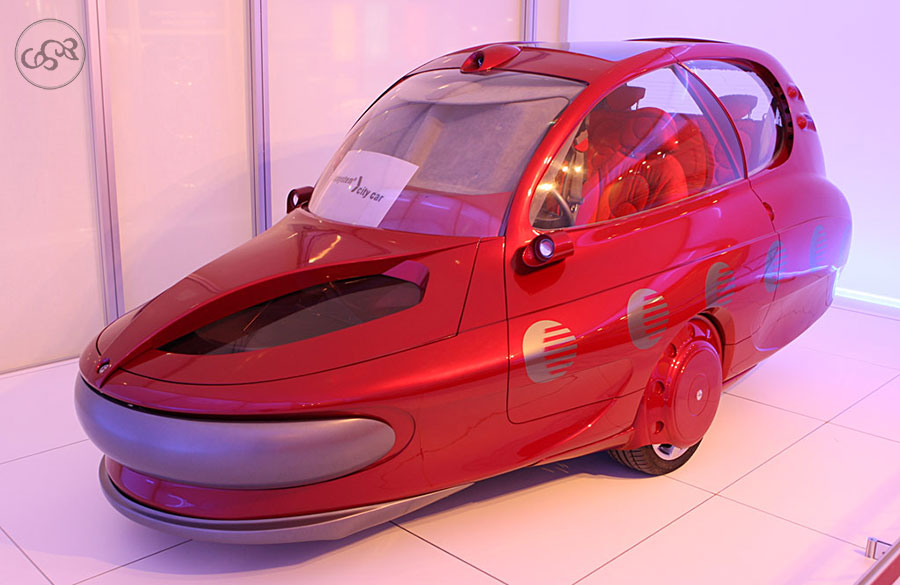
Rhomboid wheels
The strange allure is due to
the fact that the wheels are not arranged at the four
corners, but in a diamond pattern: one wheel in front, one
behind and one on each side. This arrangement dictated the
strange shape of the bodywork. But this is no mere stylistic
whim. Thanks to this wheel arrangement, the City Car is
surprisingly maneuverable. The front and rear wheels swivel
on themselves, offering an unrivalled turning radius. The
car can turn on itself. This makes turning corners child's
play.
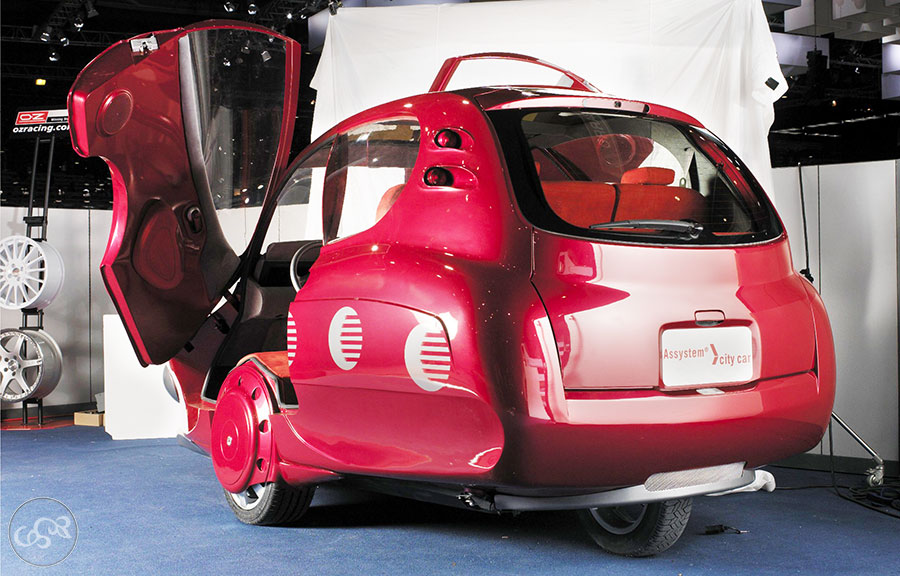
A concentrate of Sbarro
Franco Sbarro has used the principle of his Autonomous Drive Unit here: the front wheel incorporates an electric motor in its center, enabling it to reach speeds of up to 50 kph. Beyond that, a conventional 60 hp internal combustion engine in the rear wheel takes over.Another Sbarro patent used here is the dual-frame chassis. Combined with the location of the batteries in the center of the car, it offers ideal roadholding. What's more, the City Car weighs just 700 kg.
Another solution already tested elsewhere is the ovoid shape of the bodywork, which deflects the car in the event of an impact. This principle had been proposed by Philippe Charbonneaux, for whom Franco Sbarro had worked on one of the prototypes, the Ellipsis, in 1997.
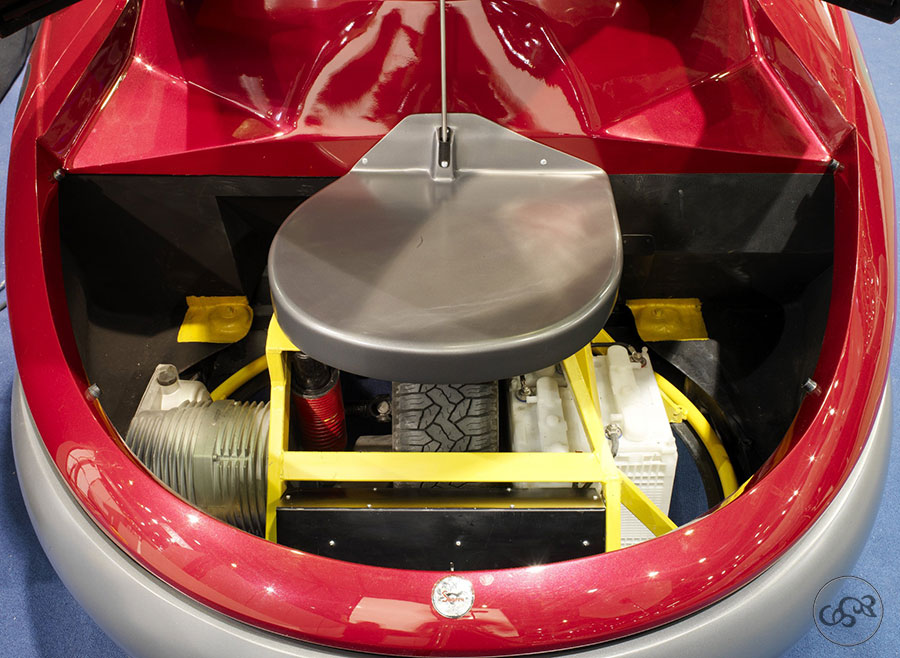
A screen instead of a windshield
Here we find Franco Sbarro
using his main inventions, brought together in a single
vehicle whose primary aim is to optimize safety. The SV1 was
the beginning, the City Car is perhaps the future. Perhaps
the most surprising aspect of this research is what you
wouldn't notice at first: to improve visibility, Sbarro
installs a screen that completely obscures the windshield!
The idea of rendering the windscreen unusable is quite
absurd. And yet: this screen retransmits images captured by
external cameras and makes them "readable". The road is thus
"visible", with better contrast and indications that warn
the driver of possible danger (thermal camera). In addition,
the driver's eyelids are constantly monitored to prevent
drowsiness.
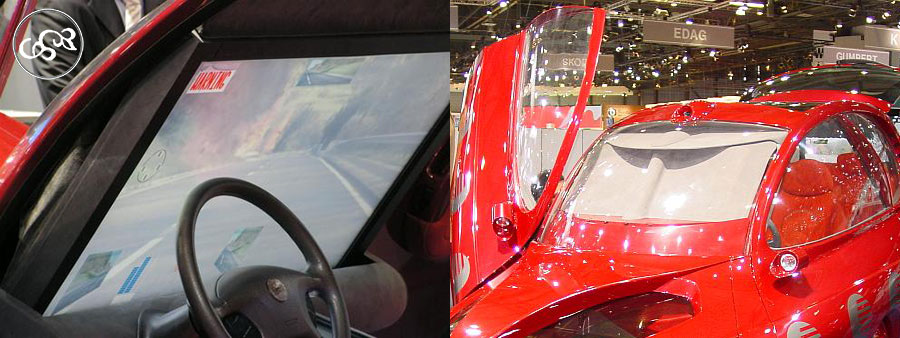
A certain idea of the future
There's a lot of innovation
in this City Car, which doesn't look like much and might
even be smiling if you don't pay close attention. Yet it is
perhaps the most elaborate car Franco Sbarro has ever
designed. In association with Assystem, he has produced a
synthesis of his work and research. Is the City Car the car
of the future? Nobody knows. There will be reluctance on the
part of users: diamond-shaped wheels shake up habits, and
the screen in front of the windscreen forces us to question
everything we know about driving. It's not going to be easy.
But for Sbarro, this could be one of the most important cars
of his career.
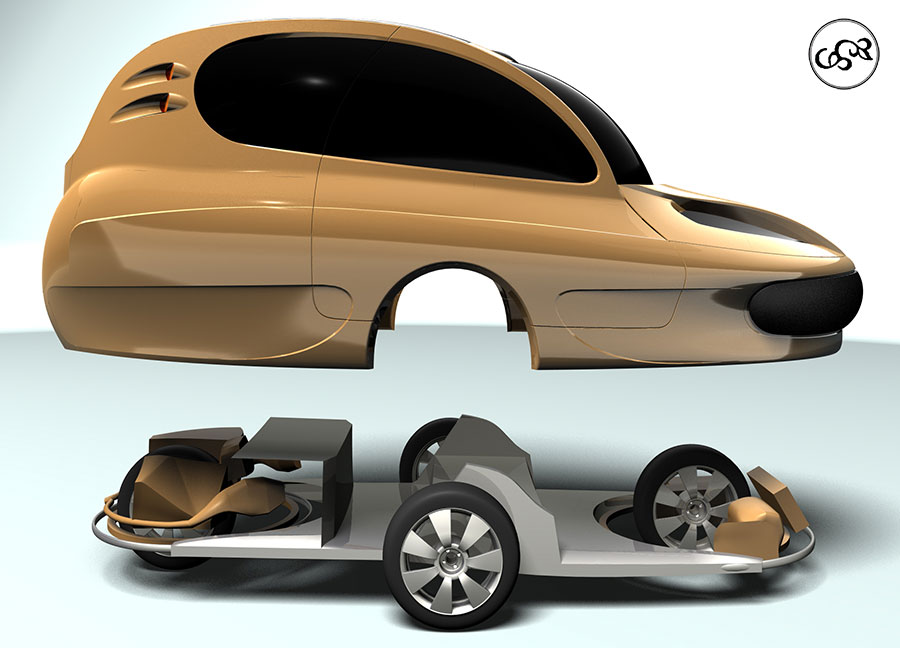
From
http://www.revueautomobile.ch
"A French engineering company active in the aeronautical and automotive sectors, Assystem has teamed up with Sbarro to build a vehicle based on 5 issues: energy and propulsion, active and passive safety, recyclability, and urban and communicating vehicles.
The Sbarro Assystem City-Car has two autonomous front and rear drive units. The front motor is electric and develops 25 hp. The rear engine is a Honda 600 cm3 twin-cylinder producing 60 hp. (...)
The instrumentation is fully touch-sensitive, controlled via a screen on the middle console. The vehicle is equipped with cameras that constantly monitor not only the road ahead, but also the driver's pupils. (...) In rain, snow or poor visibility, an LCD screen is extracted from the dashboard and completely obscures the windscreen! Five cameras then transmit to the driver a view of the road and what's happening behind and to the sides of the vehicle.
"The image is the same as on a simulator. It will challenge and shock! Our aim is to demonstrate. If we don't want the screen, we'll take it down and return to a conventional dashboard!" says Sbarro."
"A French engineering company active in the aeronautical and automotive sectors, Assystem has teamed up with Sbarro to build a vehicle based on 5 issues: energy and propulsion, active and passive safety, recyclability, and urban and communicating vehicles.
The Sbarro Assystem City-Car has two autonomous front and rear drive units. The front motor is electric and develops 25 hp. The rear engine is a Honda 600 cm3 twin-cylinder producing 60 hp. (...)
The instrumentation is fully touch-sensitive, controlled via a screen on the middle console. The vehicle is equipped with cameras that constantly monitor not only the road ahead, but also the driver's pupils. (...) In rain, snow or poor visibility, an LCD screen is extracted from the dashboard and completely obscures the windscreen! Five cameras then transmit to the driver a view of the road and what's happening behind and to the sides of the vehicle.
"The image is the same as on a simulator. It will challenge and shock! Our aim is to demonstrate. If we don't want the screen, we'll take it down and return to a conventional dashboard!" says Sbarro."
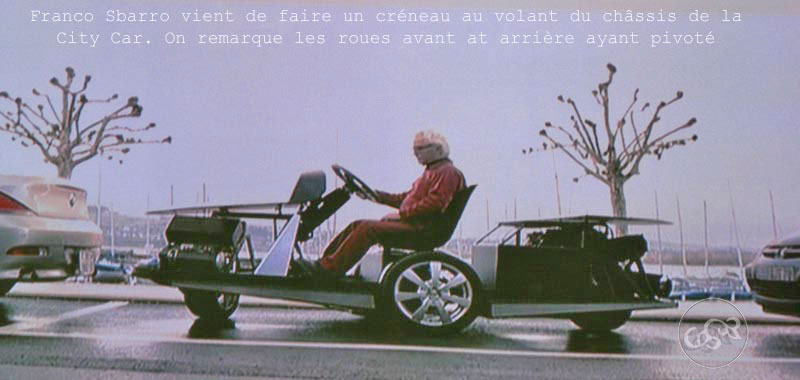
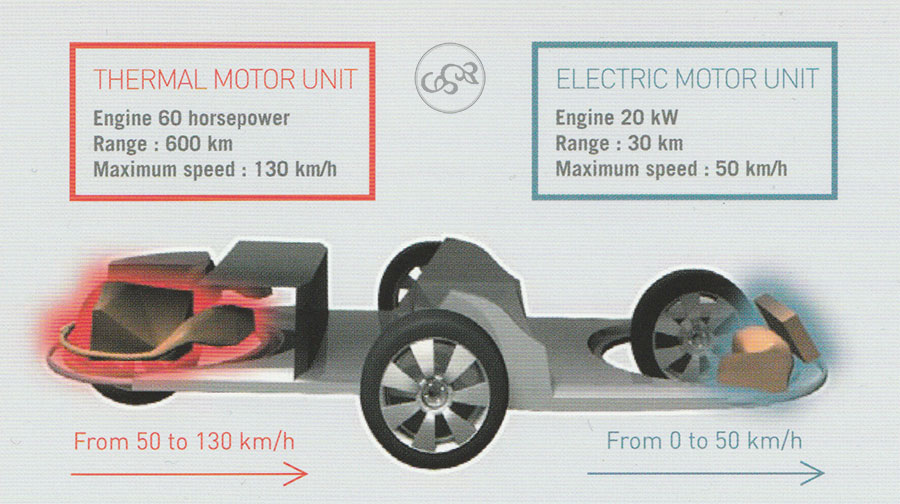
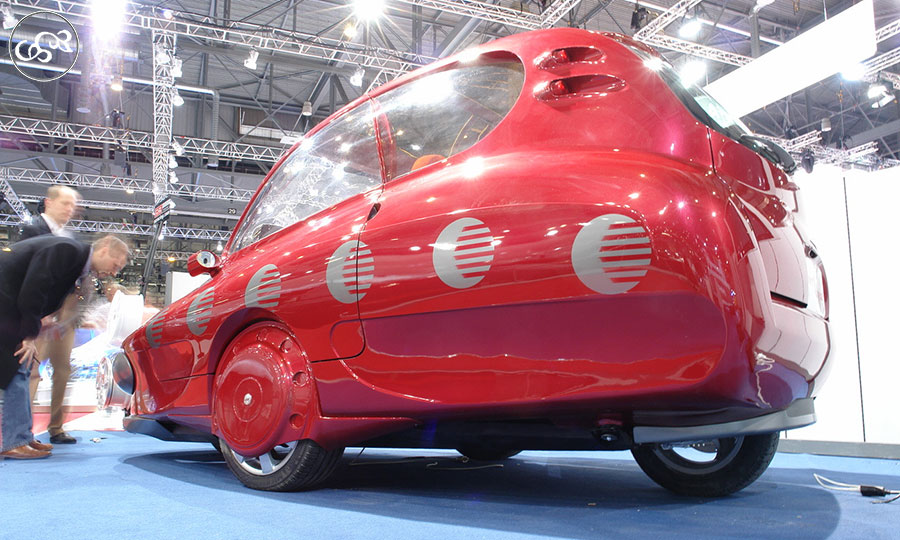
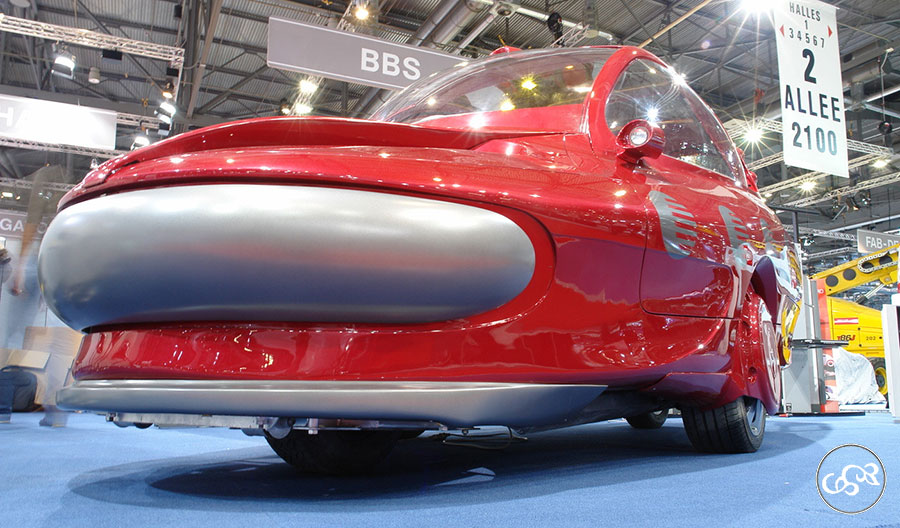
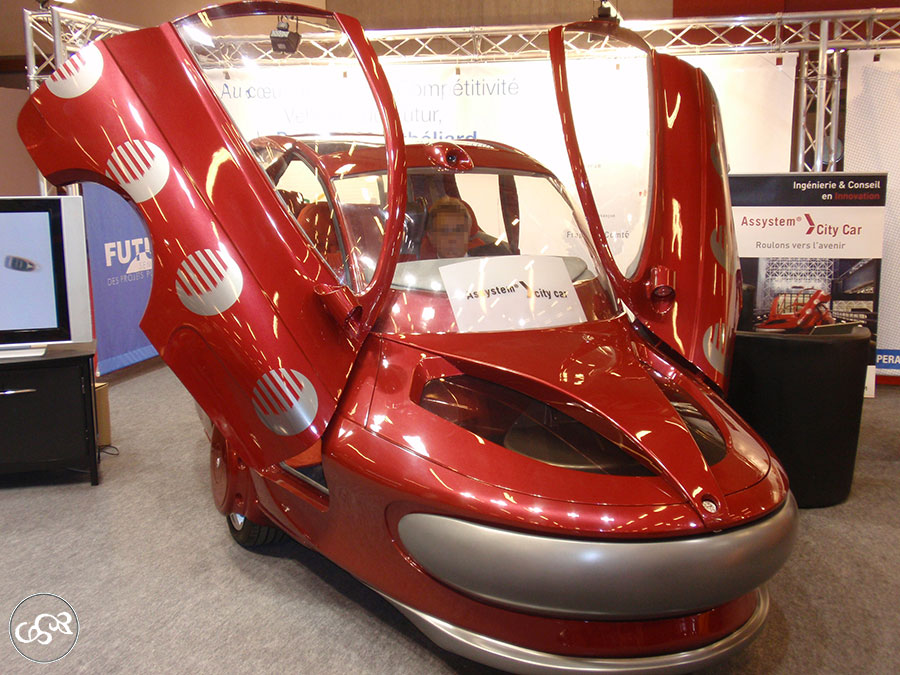
In brief
1- Rhomboid wheels
2- Autonomous drive wheel, dual-frame chassis
3- A screen instead of a windshield